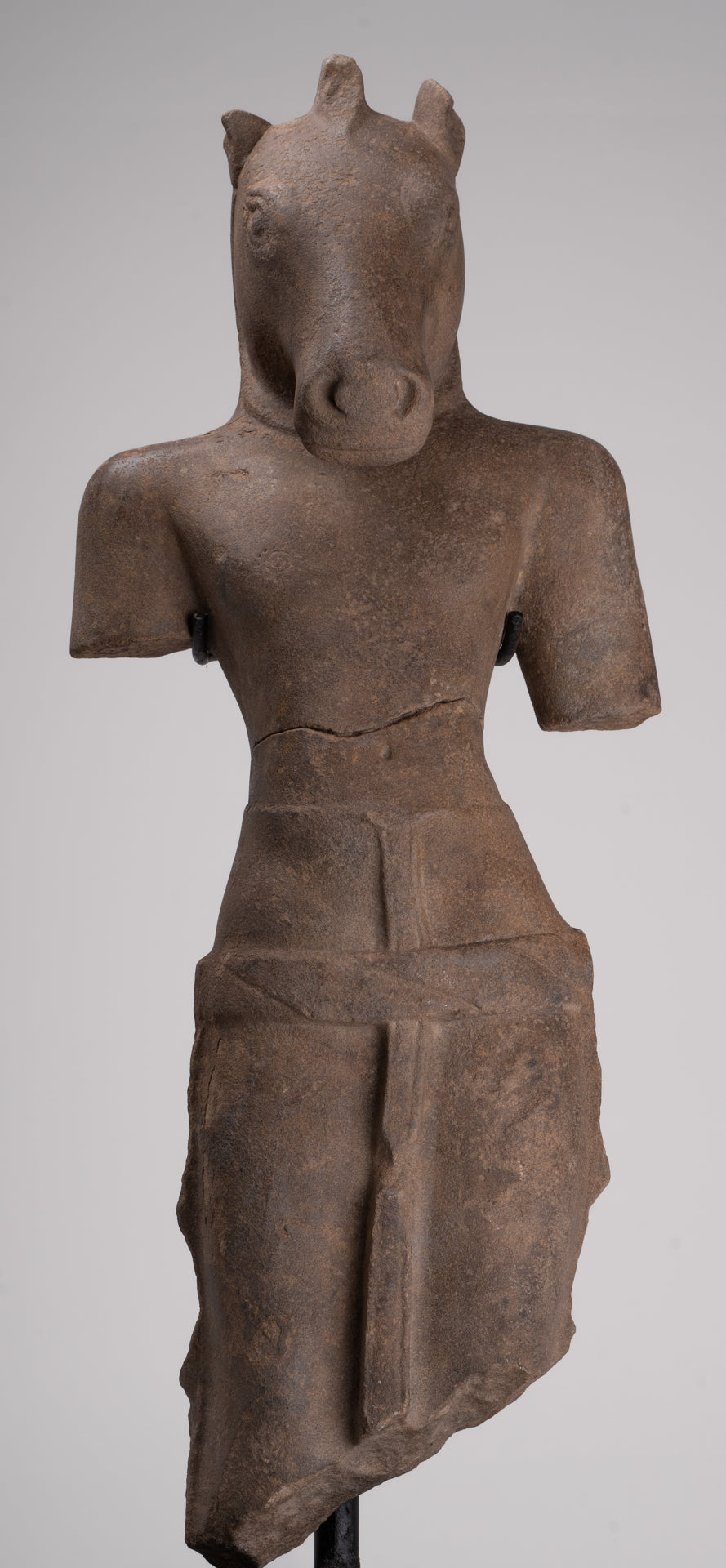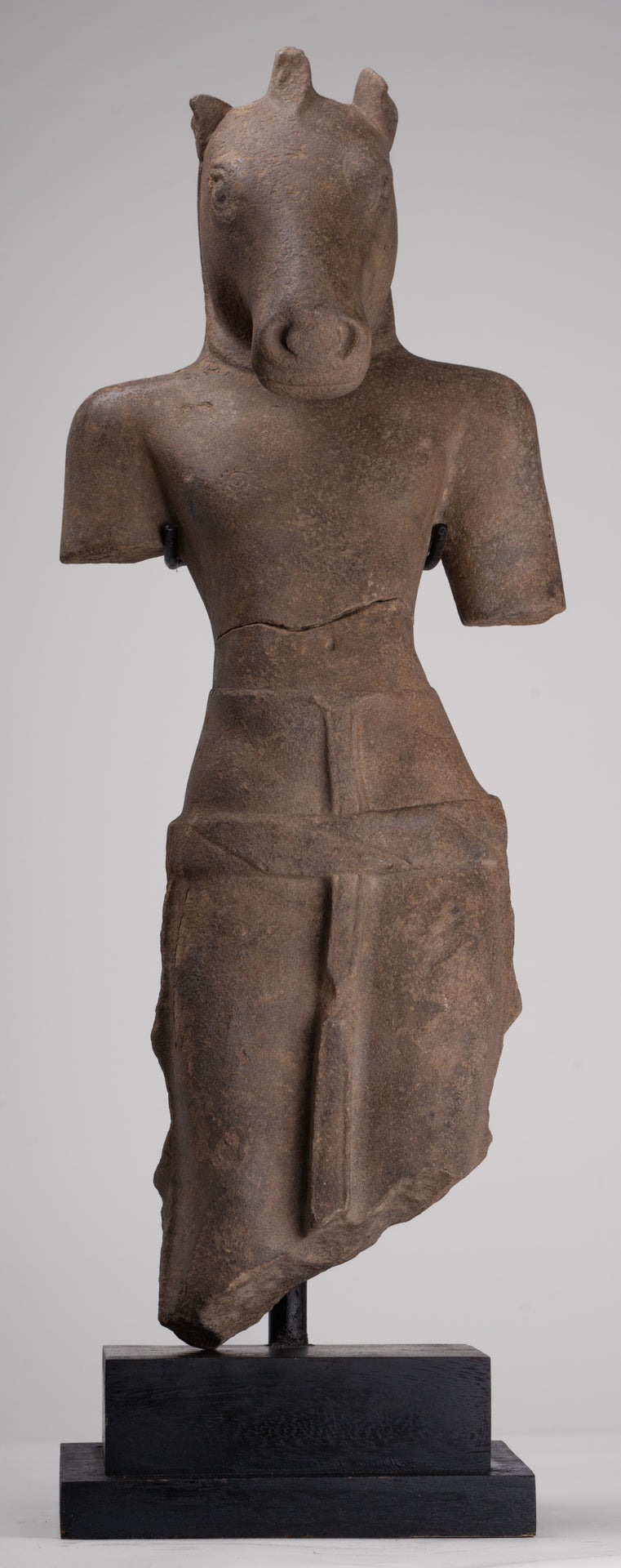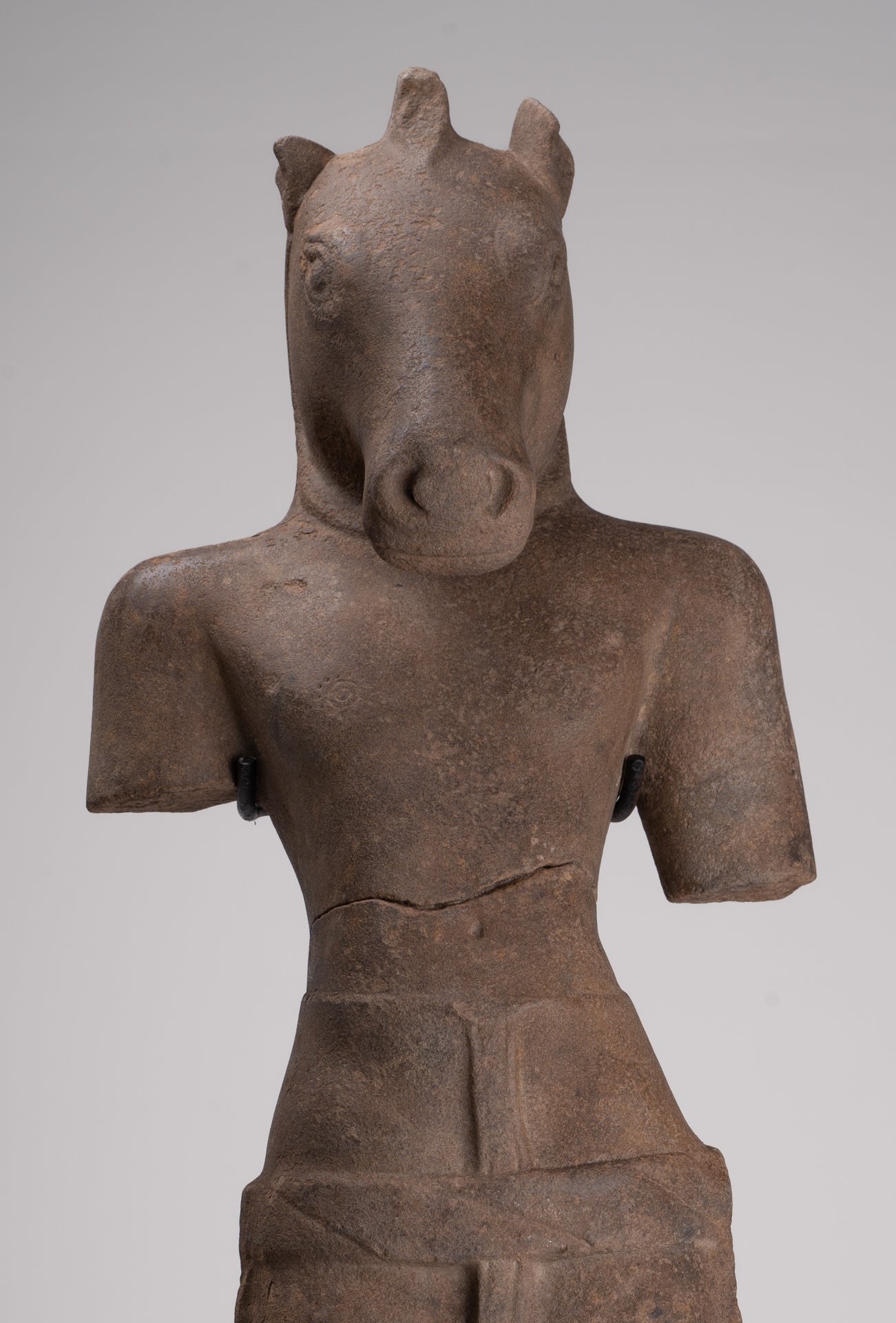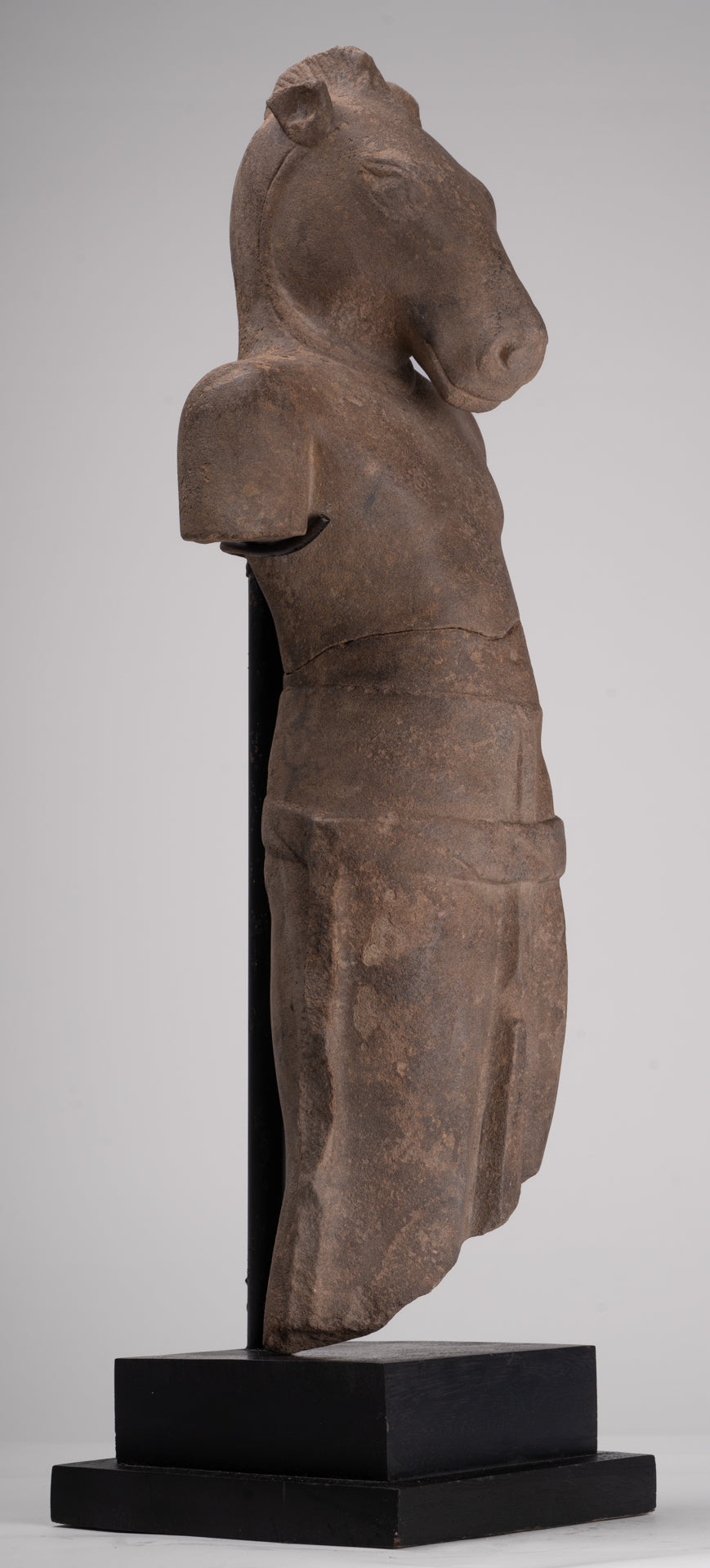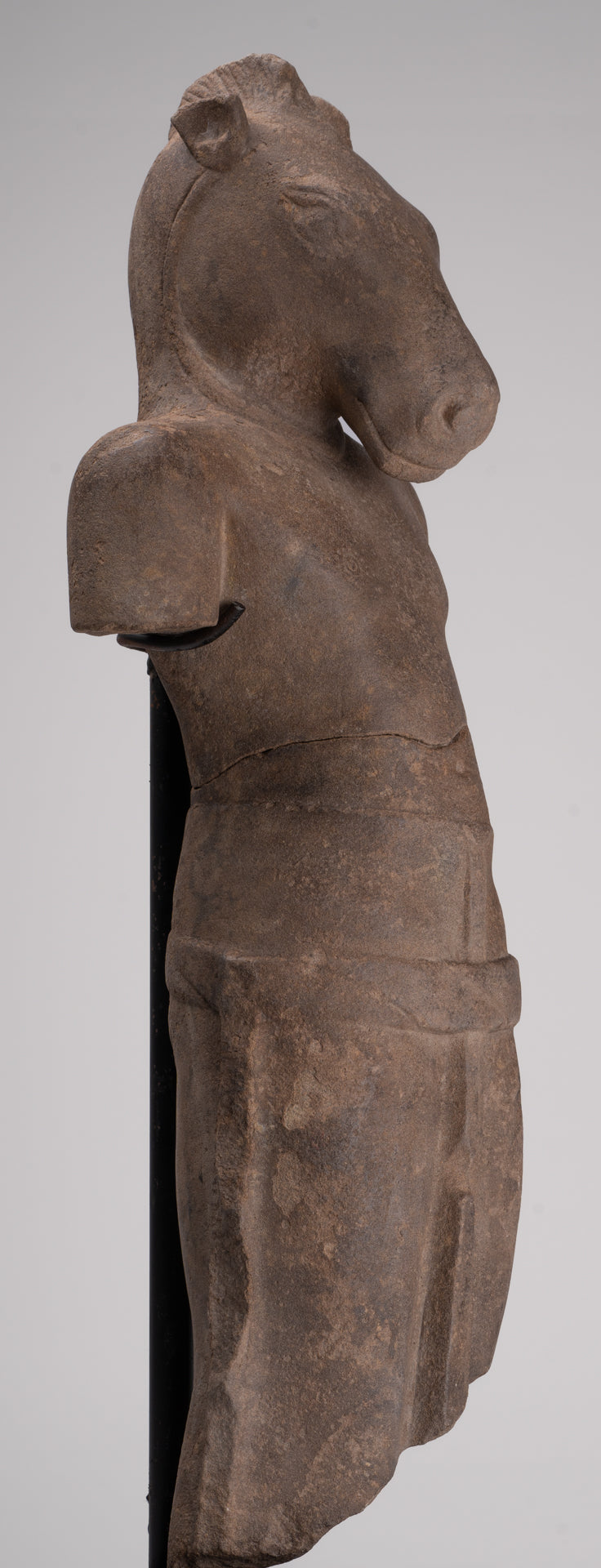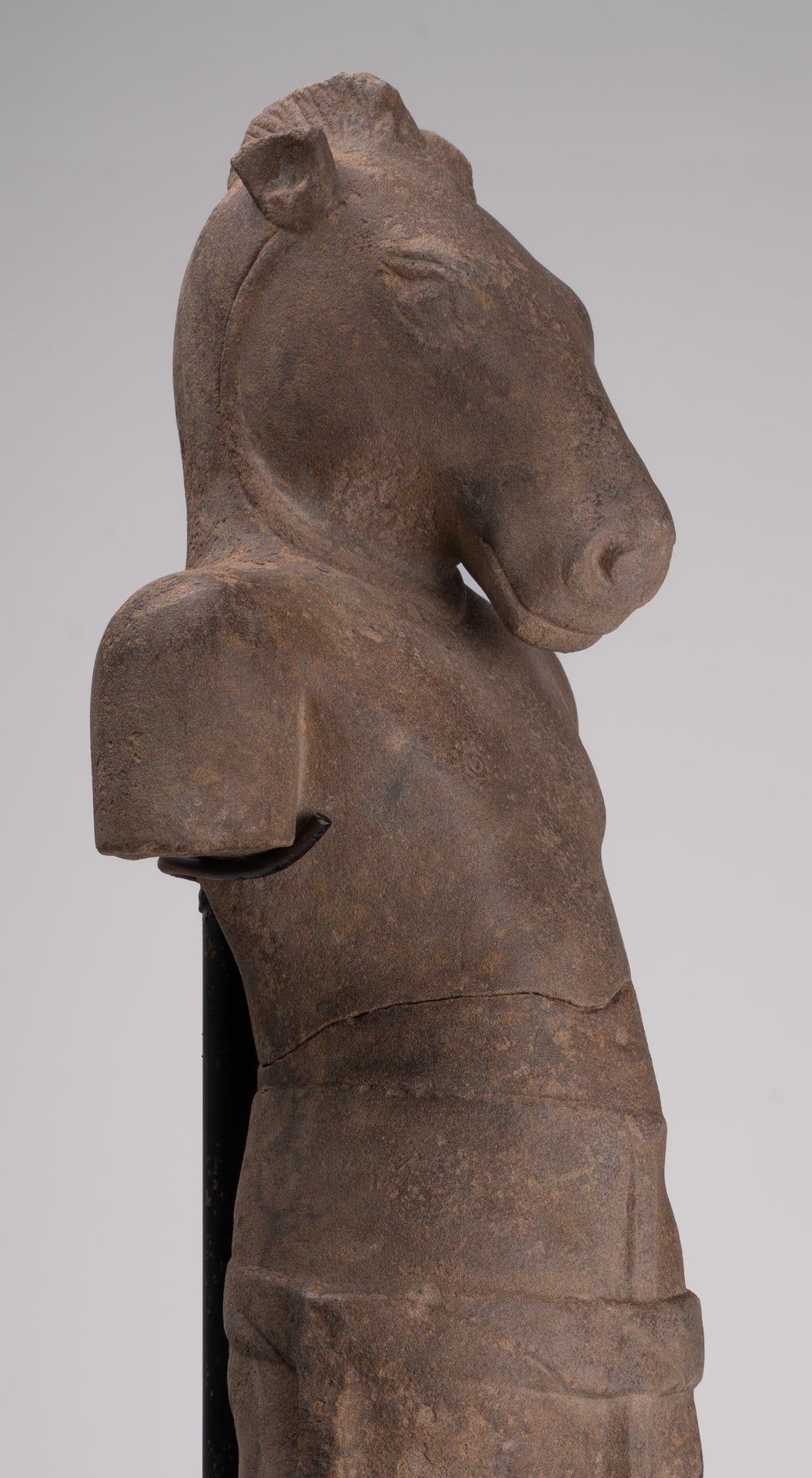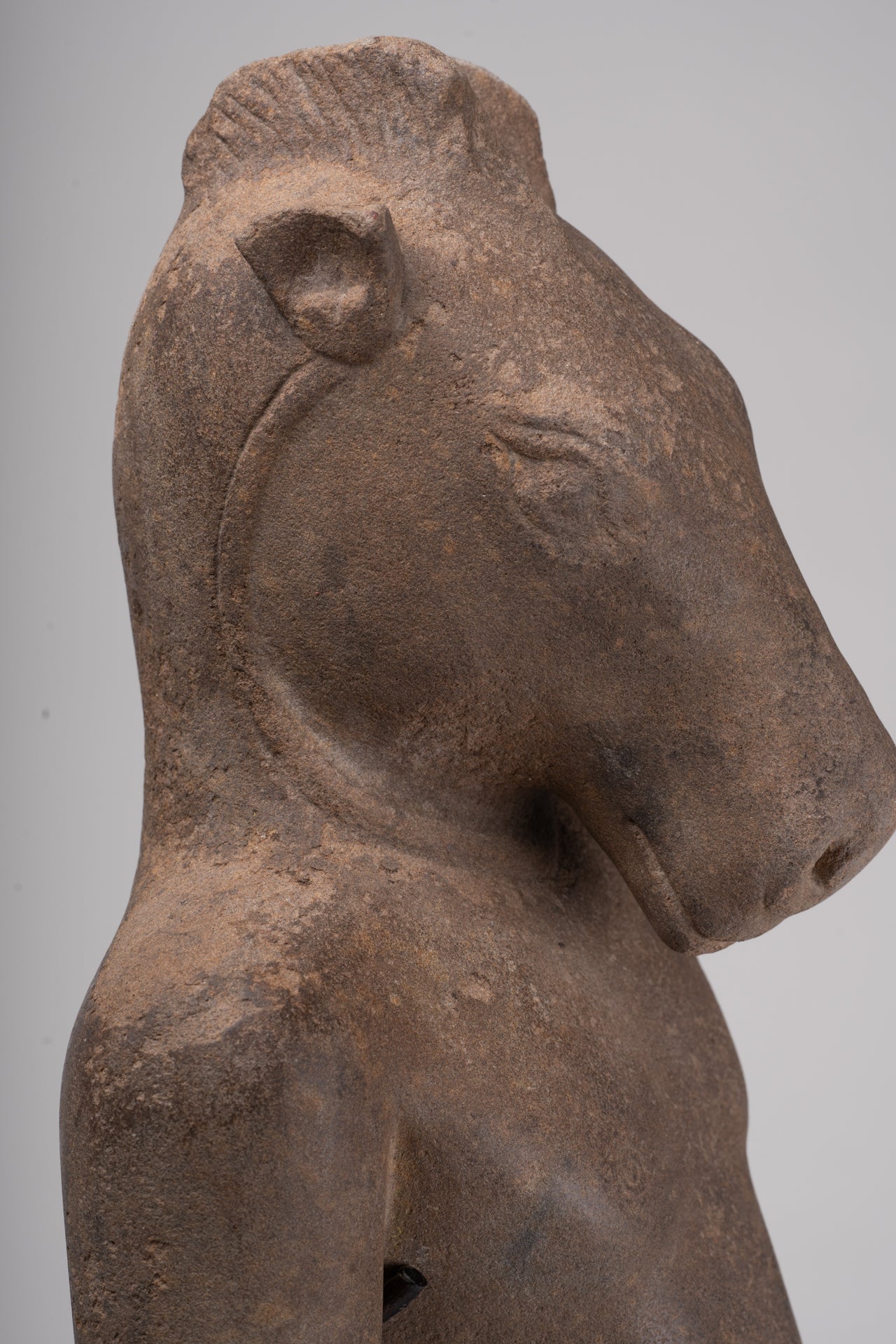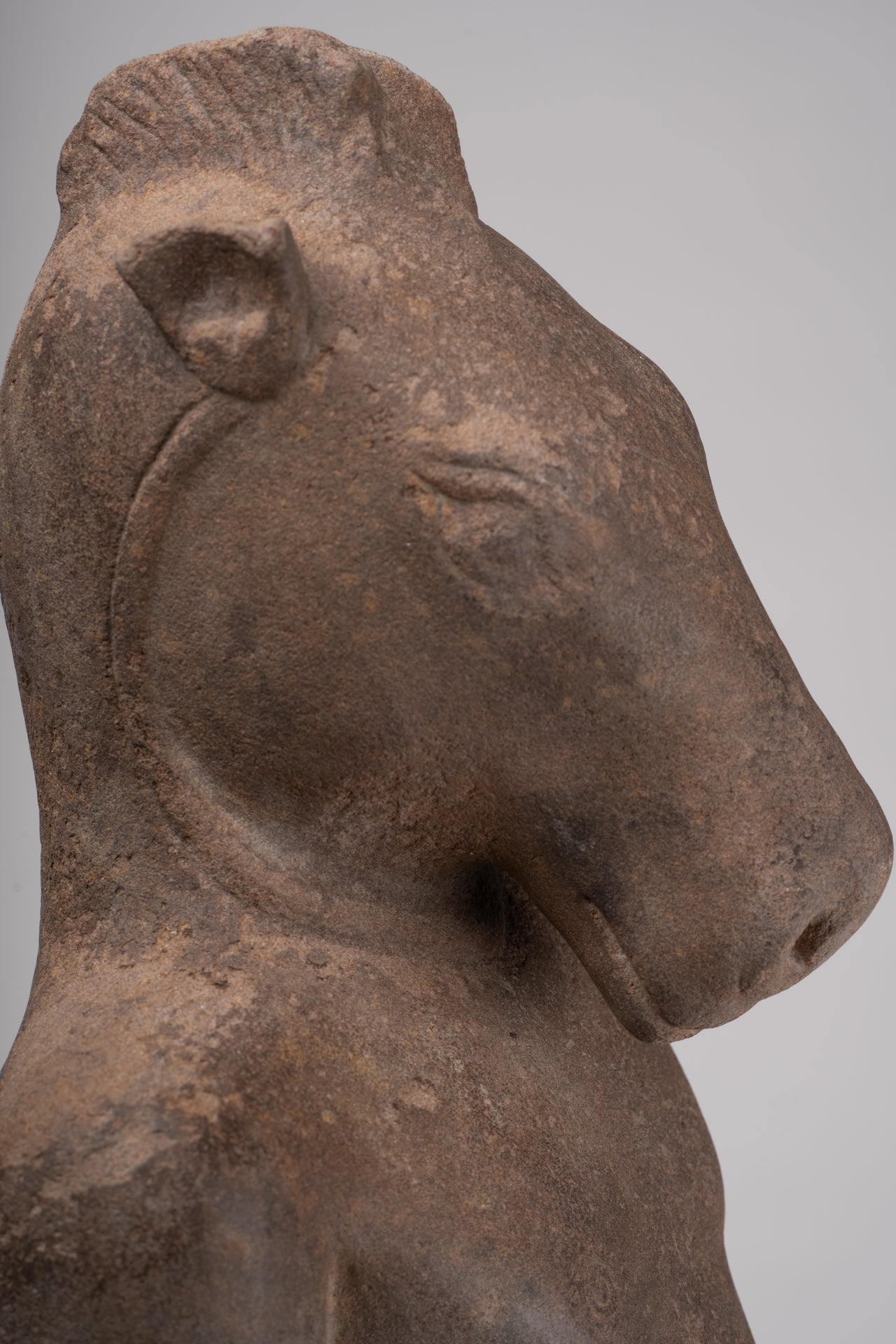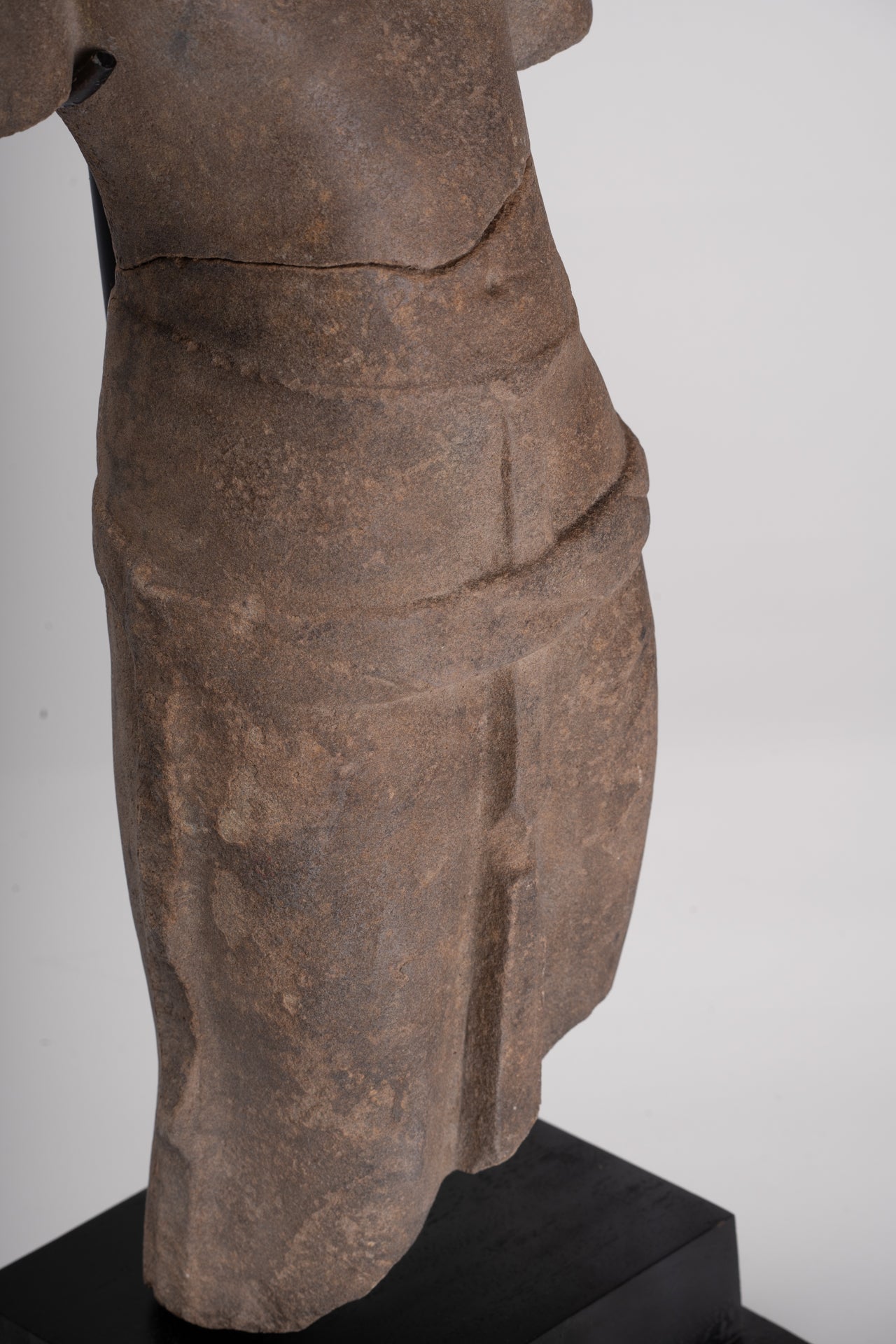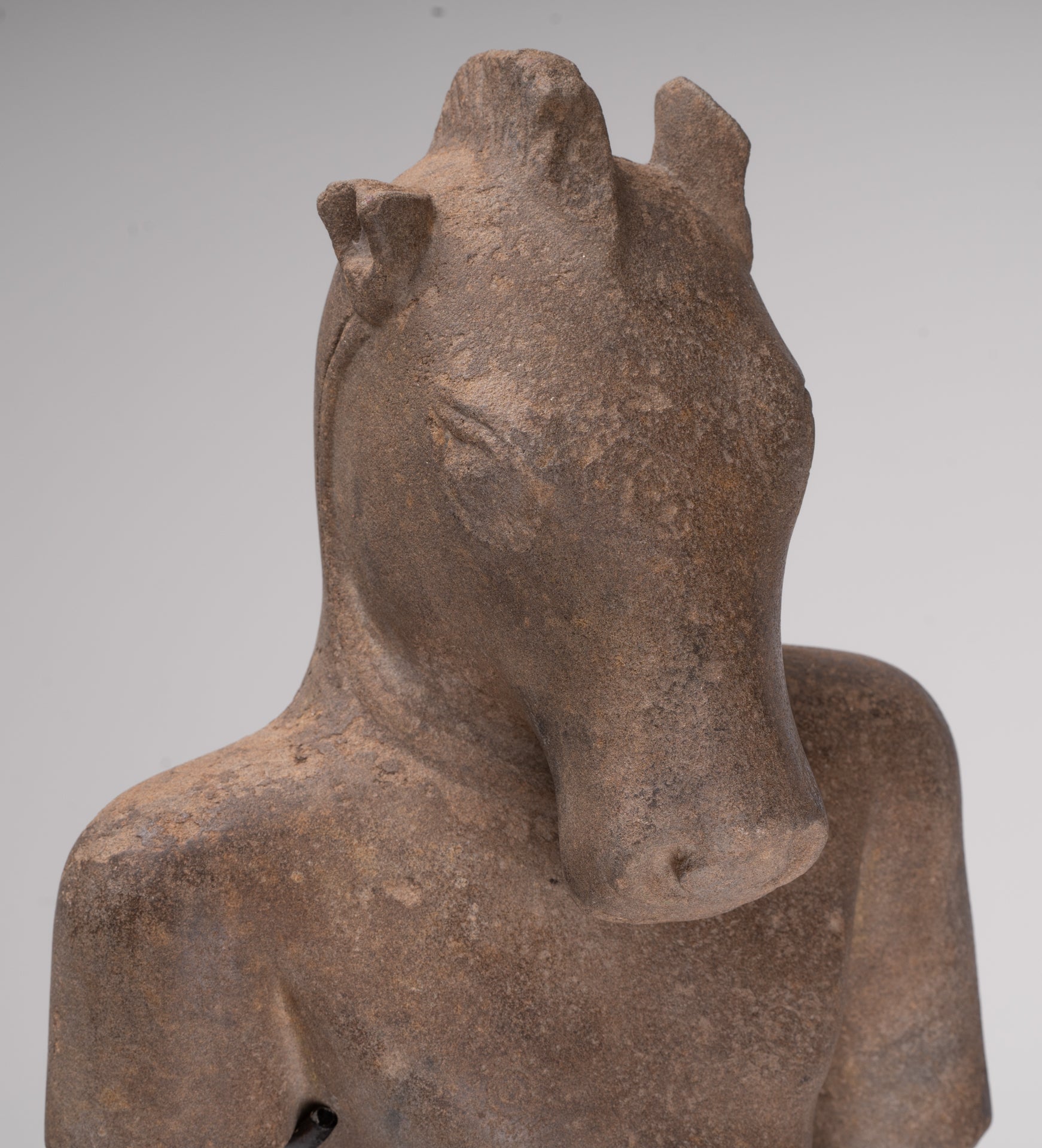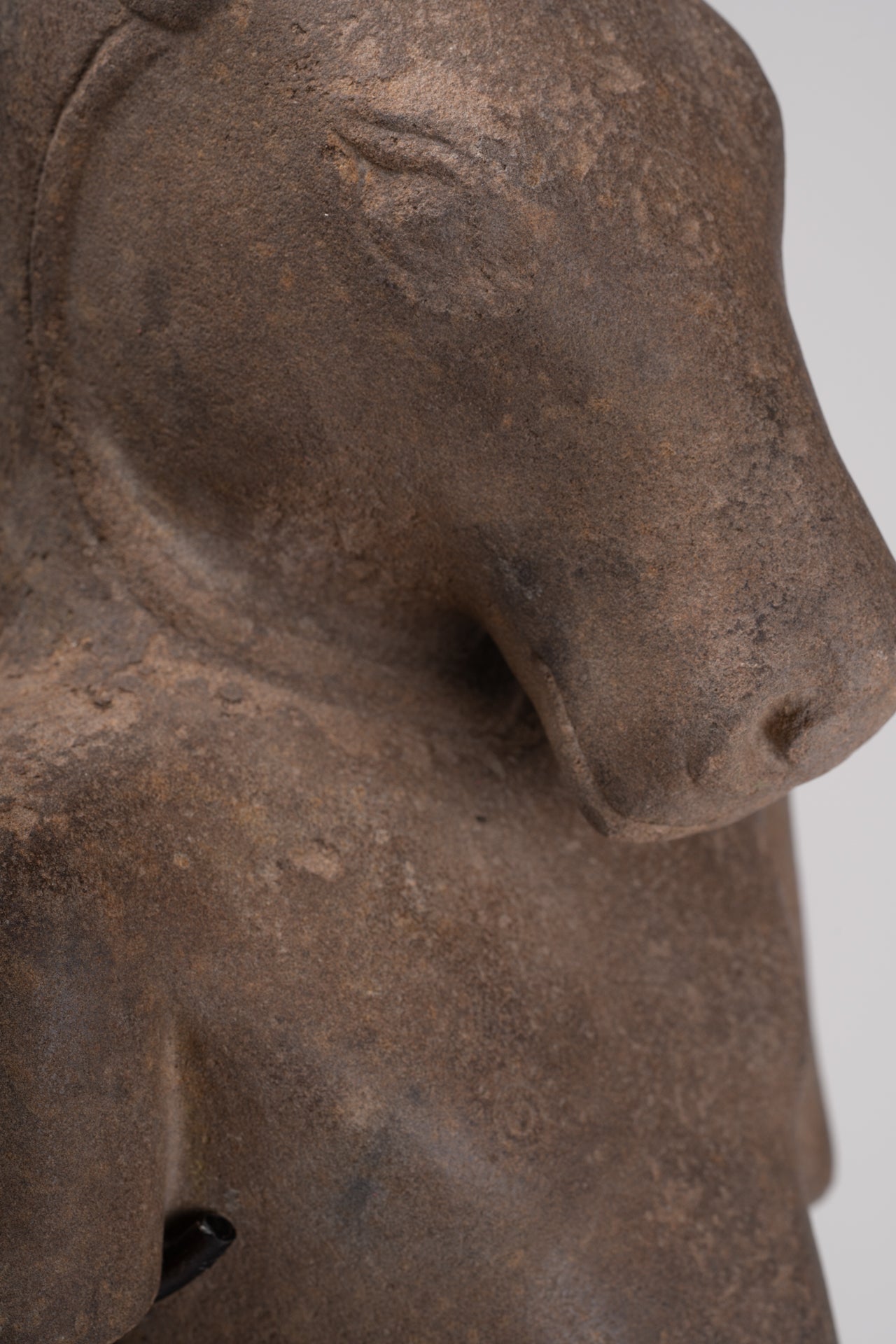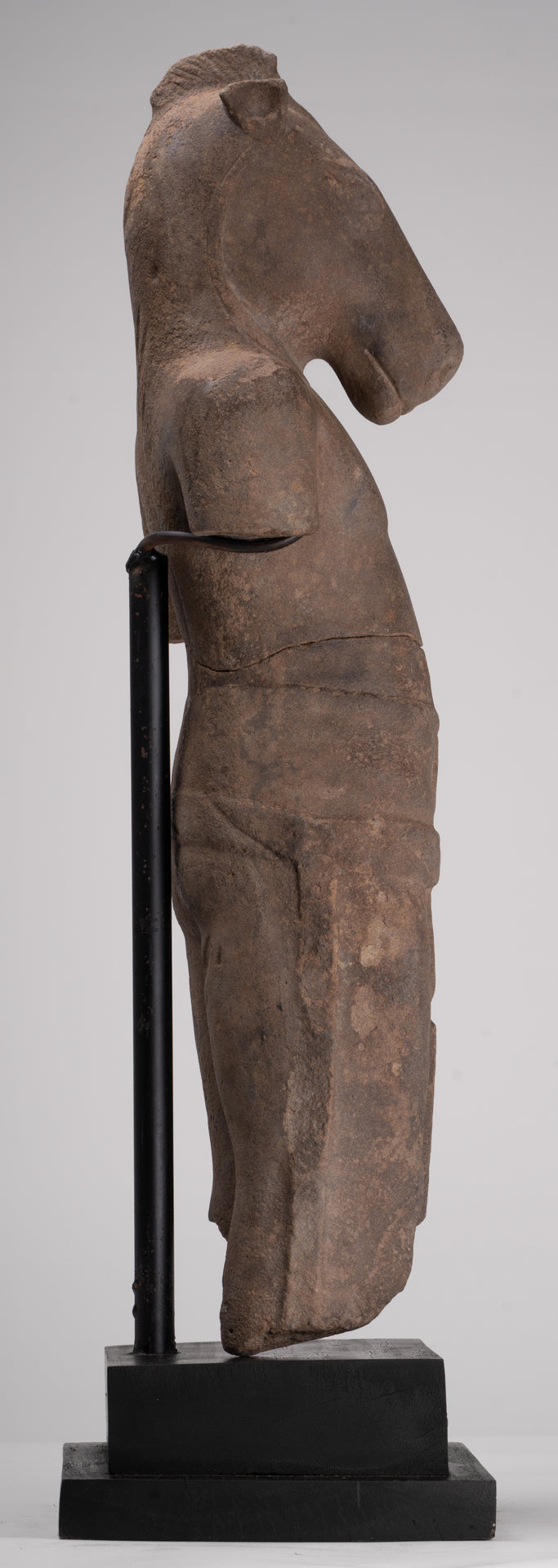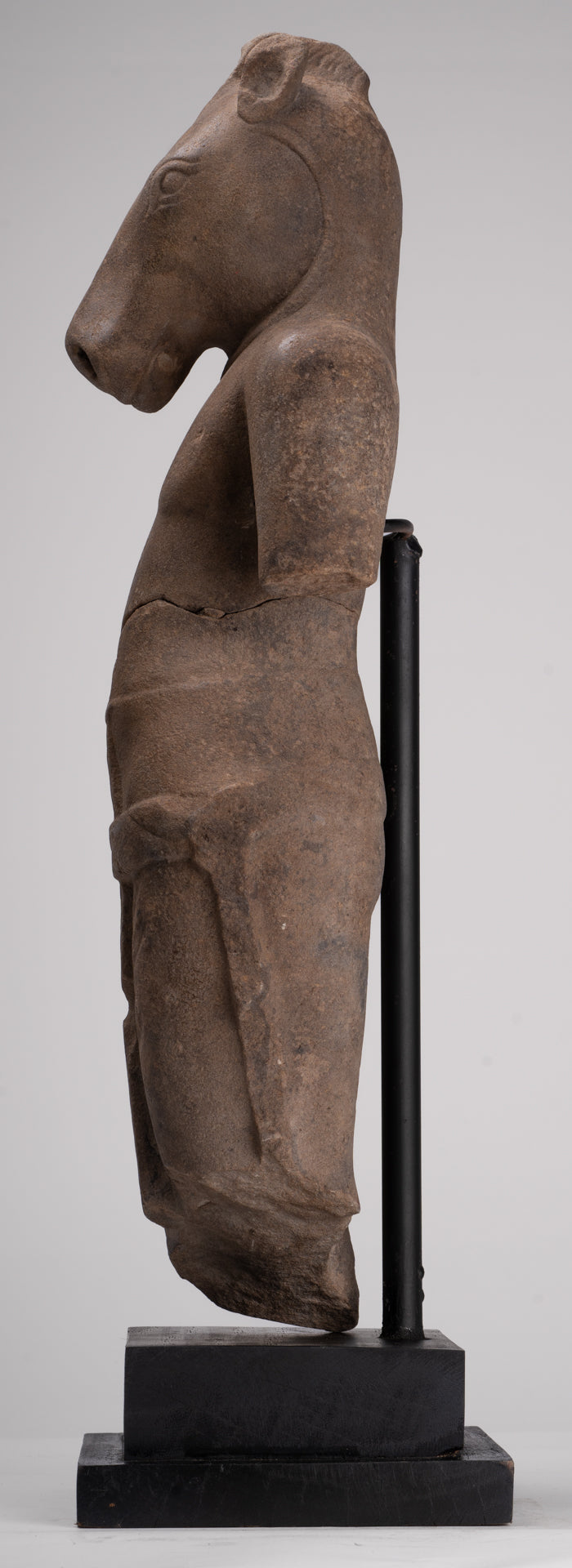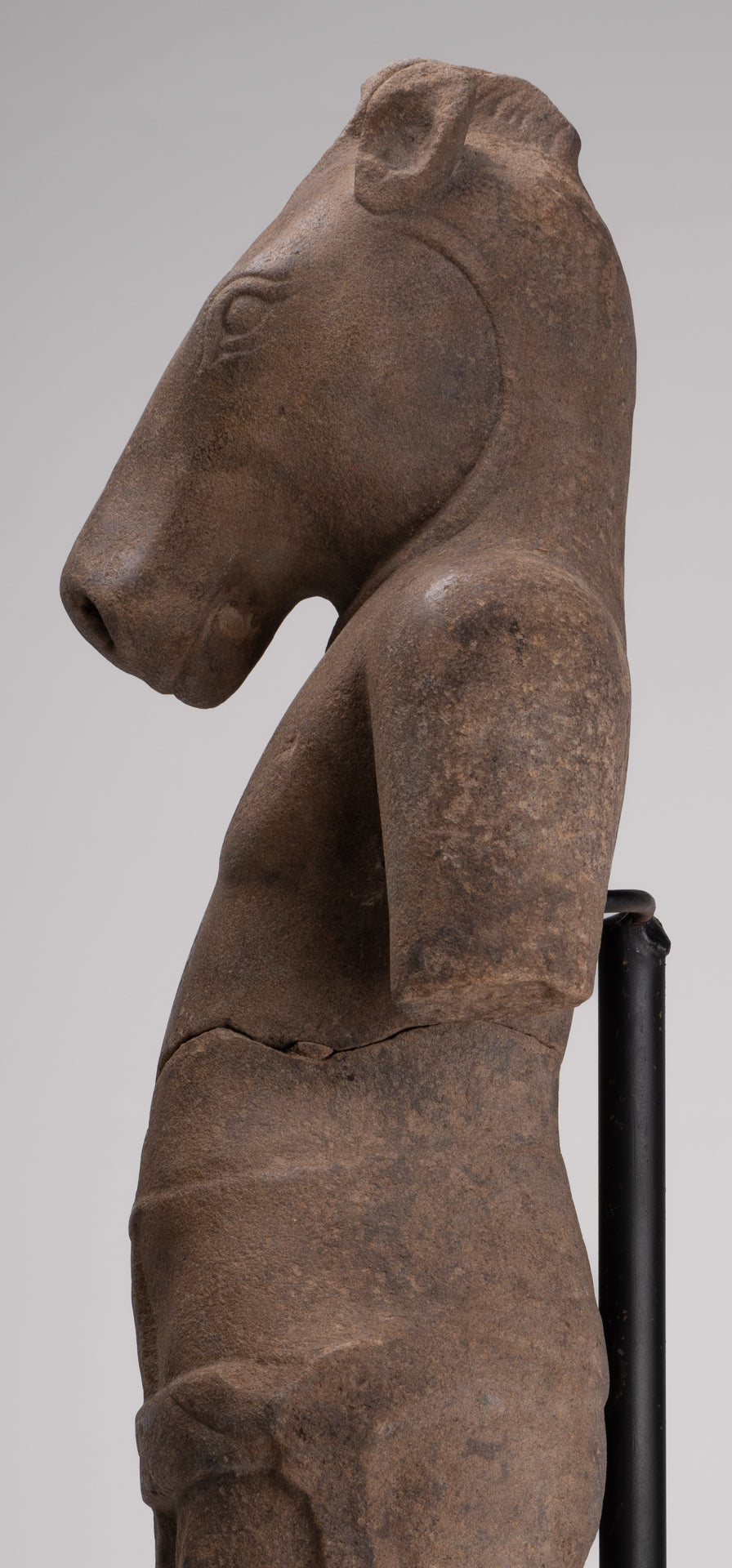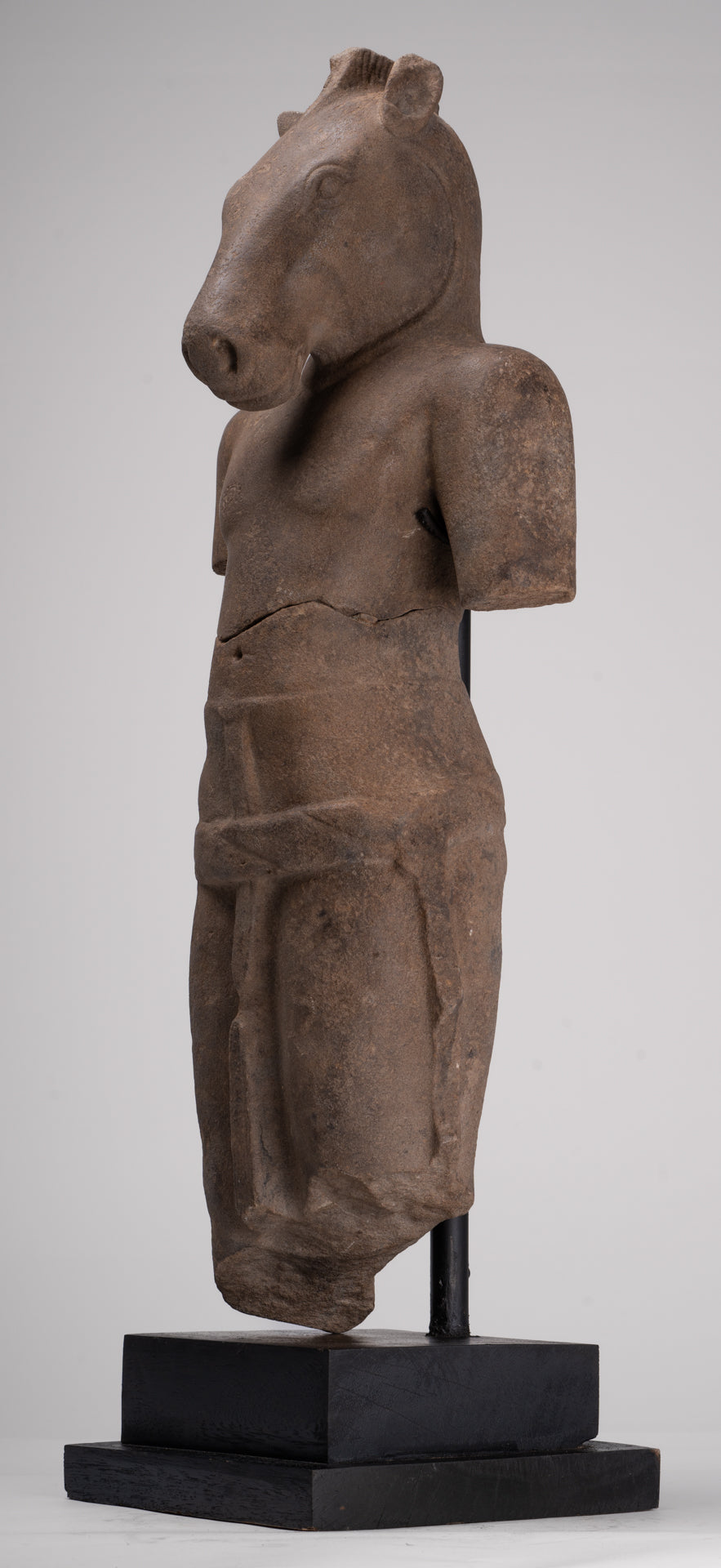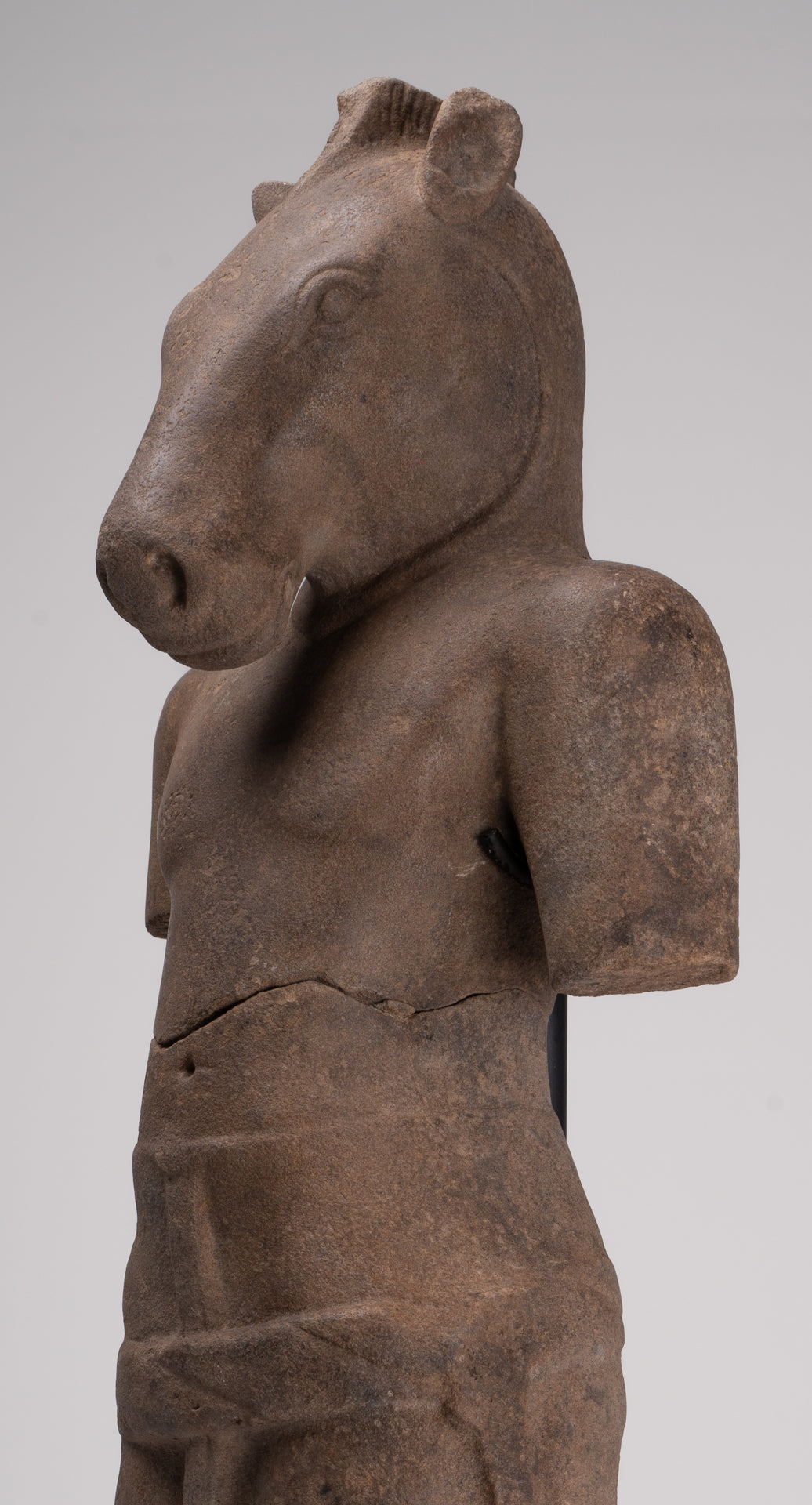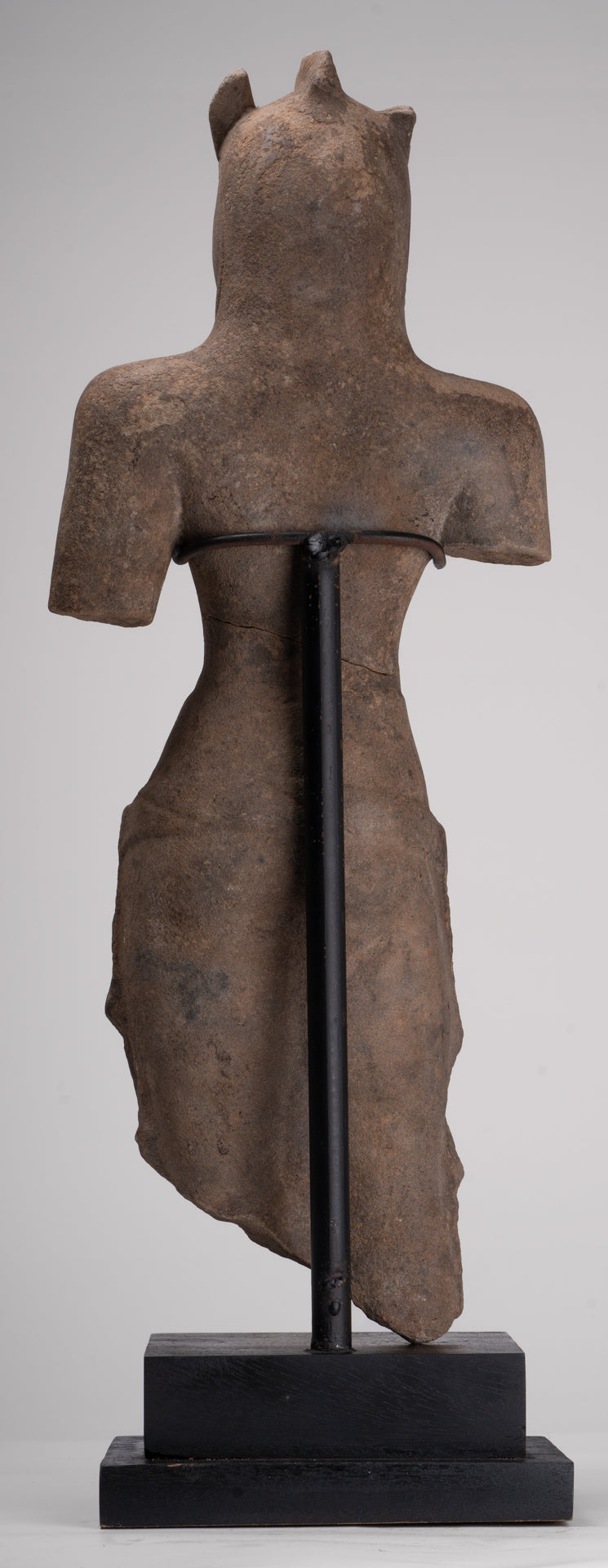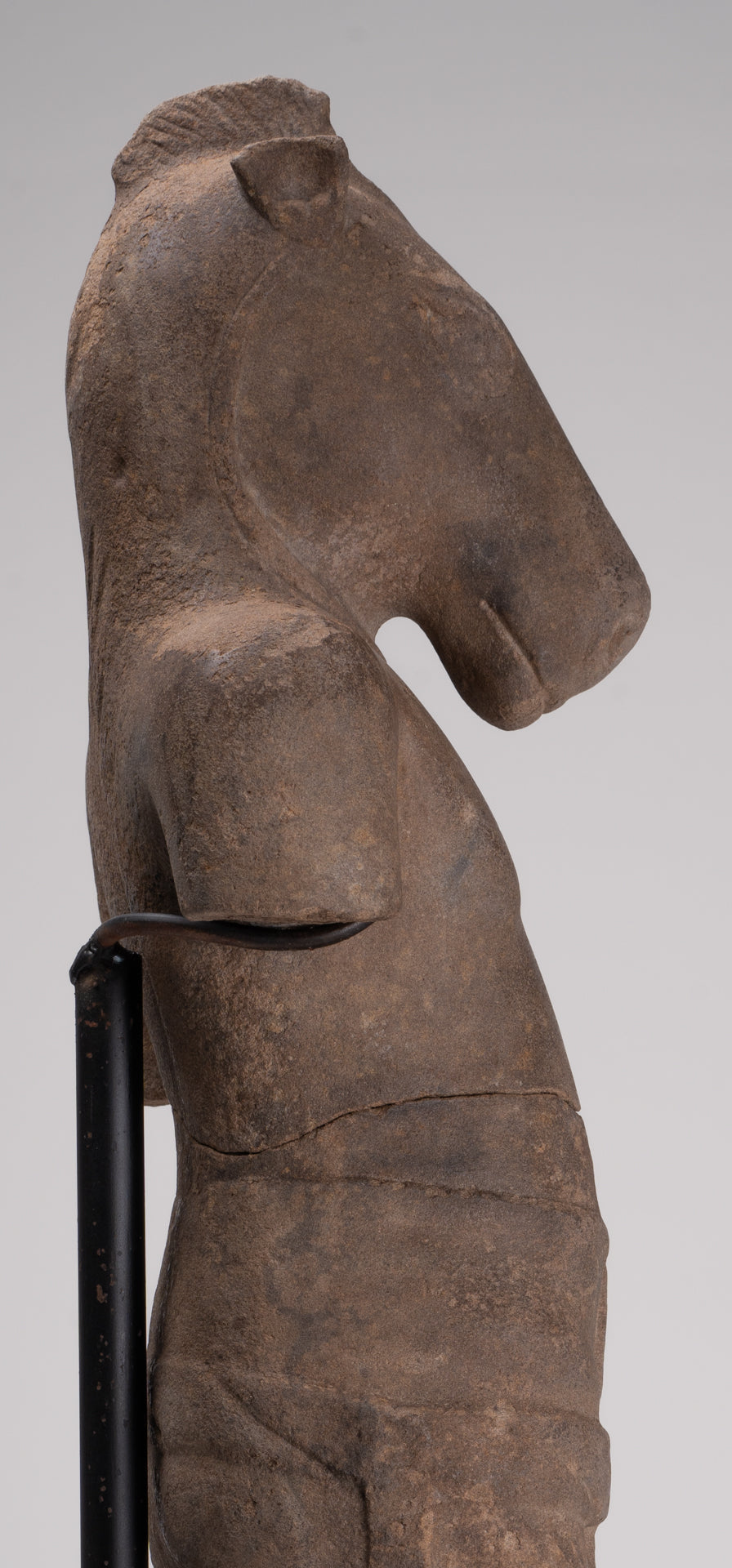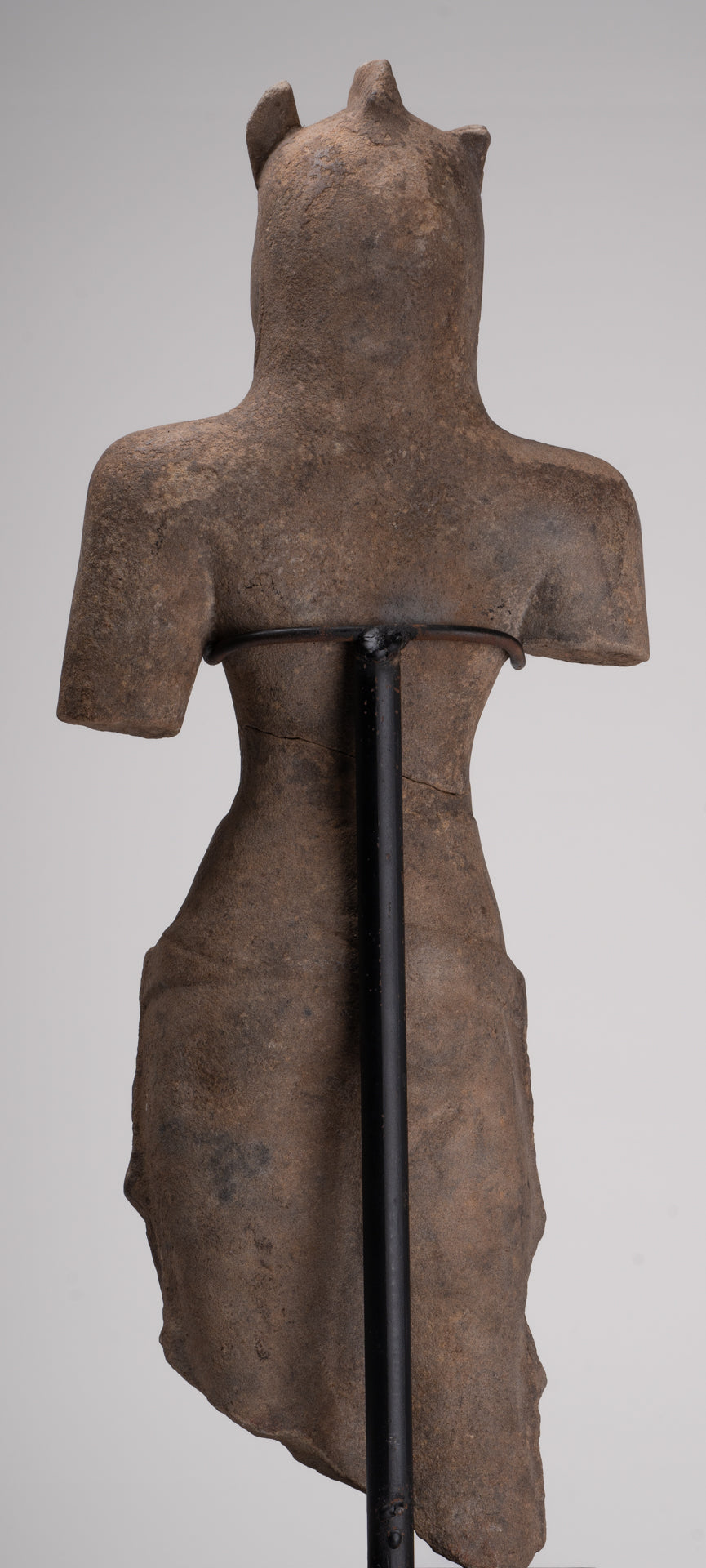-
Antique Khmer Style Stone Phnom Da Hayagriva Kalkin Horse of Vishnu - 68cm/27"
Measurements - 68cm/27" (Height)
A 6th/7th century Phnom Da style stone sculpture of Hayagriva or Kalkin, avatar of Vishnu.
Hinduism, one of the world's oldest religions, is rich with a pantheon of gods and goddesses, each with their own distinct attributes and avatars. Among the ten principal avatars of Lord Vishnu, the Kalki avatar holds a unique place. Kalkin is believed to be the future and final avatar of Lord Vishnu, who will appear in a time of great crisis to restore cosmic balance and righteousness.
Kalkin, literally having or being a horse is the future world saviour understood as the tenth avatar of Vishnu, who will return at the end of the next kaliyuga to judge mankind.
He is worshipped as the God of knowledge and wisdom, with a human body and a horse's head. Symbolically, the story represents the triumph of pure knowledge, guided by the hand of God, over the demonic forces of passion and darkness.
Kalki or Kalkin is often referred to as the destroyer of foulness or the destroyer of darkness.
Kalkin's role as the future savior is outlined in various Hindu texts, including the Puranas. He is expected to descend atop a white horse, wielding a sword, and will be instrumental in bringing an end to the prevailing darkness and chaos of Kali Yuga. Kalkin is often portrayed as a fierce warrior who will rid the world of unrighteousness and restore dharma.
Kalkin, the future avatar of Lord Vishnu, holds a special place in Hinduism as the harbinger of hope and the ultimate savior. His prophesied role as a warrior who will restore cosmic balance and righteousness resonates with believers, emphasizing the enduring importance of dharma and ethical conduct in the face of moral decline.
Kalkin serves as a reminder that, in Hindu cosmology, the wheel of time keeps turning, and even the darkest ages eventually give way to a new era of light and righteousness, guided by the eternal principles of Hindu philosophy.
The detail, patina and design of this piece are particularly appealing.
The statue is mounted on a wood block (later).
Scholarly Reference:
New York Metropolitan Museum Collection - Reference: 77645
National Museum of Cambodia, Phnom Penh (Ka.1642)
-
The majority of orders will be shipped with DHL. This is a secure, express and fully tracked service.
Items less than 2Kg we typically ship using Royal Mail.
Once we receive your order we try to ship all orders the same or next working day.
Large and/or fragile pieces requiring palletising, specialist crating and/or extra packaging may take a little longer. Palletised shipments will be delivered curbside.
All orders over 35 GBP will be shipped free of charge.

-
We genuinely hope that all purchases delight.
However, if they do not, regardless of reason, we will refund all orders upon receipt of the unwanted item. Just notify us within 14 days of receiving your order that you wish to make a return and send the piece back to us with 30 days of delivery.
Let Us Help You Find The Piece You Desire
What Our Customers Think
The shipment went well and both statues arrived at their new home. We are loving them very much.
Andreas, Genoa, Italy
My Buddha arrived in perfect condition and I am very pleased - both with the Buddha and your service. Thank you so much.
Christina, Detroit, MI, USA
Thanks for your kind note. I have always found it to be a pleasure doing business with your company. The products and service offered are superb. As a collector, I already own several Burmese pieces, but nothing even closely comparable to this one. When I saw it I was smitten. Keep up the good work. You have in me a very satisfied and confirmed customer.
Henry, Cordele, GA, USA


